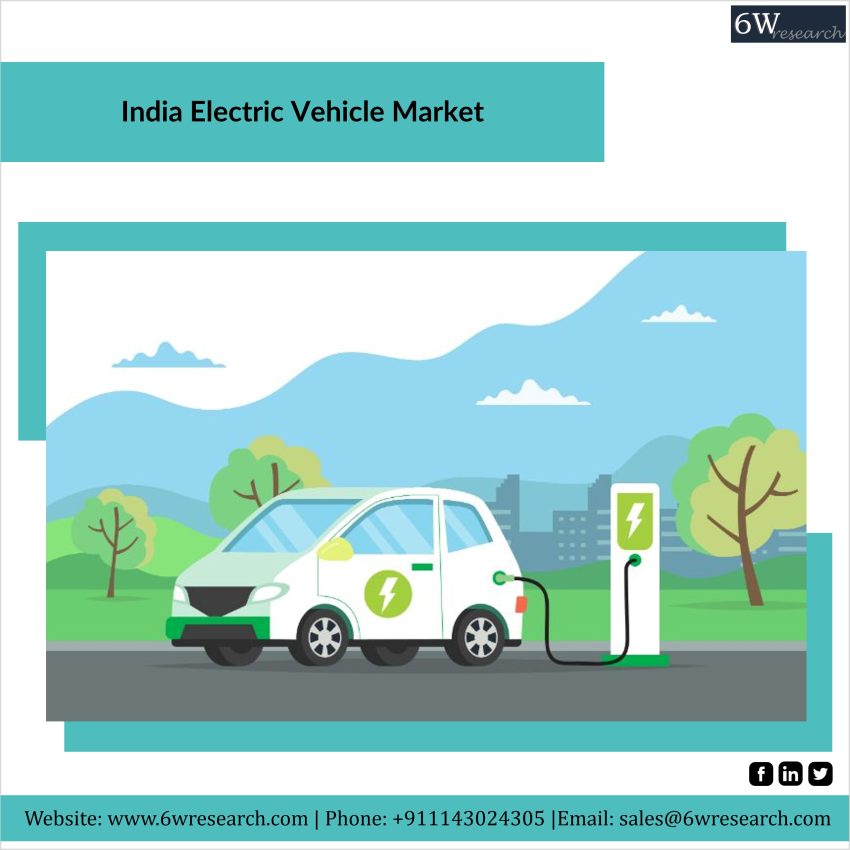India Electric Vehicle Market Synopsis
The India electric vehicle market has been growing rapidly in recent years, driven by government initiatives to promote sustainable transportation and reduce dependence on fossil fuels. The Indian government has set a target of having XX% of all vehicles on Indian roads to be electric by 2030.
The two-wheeler segment has been the most successful in the Indian EV market, with a range of affordable and efficient models from companies like Hero Electric, Okinawa, and Ather Energy. In 2020, two-wheelers accounted for over XX% of the EVs sold in India.
The four-wheeler EV segment has been slower to take off due to higher costs and a lack of charging infrastructure. However, the government has been offering incentives to promote the adoption of EVs in this segment as well. Some of the popular EV cars in India include Tata Nexon EV, MG ZS EV, and Hyundai Kona Electric.
India has also seen a rise in the adoption of electric three-wheelers, particularly in the ride-hailing and logistics sectors. Companies like Mahindra Electric, Kinetic Green, and Piaggio have been leading the way in this segment.
Overall, the India electric vehicle market is expected to continue its growth trajectory in the coming years, driven by government support, increasing consumer awareness and demand, and the entry of new players in the market. However, the lack of charging infrastructure remains a challenge that needs to be addressed for sustained growth in the market.
What are the Key Trends in the India Electric Vehicle Industry?
The India electric vehicle (EV) industry is experiencing a number of key trends, some of which include:
- Increasing government support: The Indian government has been actively promoting the adoption of EVs in the country through various incentives, subsidies, and initiatives. These include tax exemptions, purchase incentives, and infrastructure development.
- Growth in the two-wheeler segment: The two-wheeler EV segment has seen significant growth in recent years, driven by the availability of affordable and efficient models from local manufacturers.
- Expansion of the charging infrastructure: The development of charging infrastructure is crucial for the growth of the EV market, and the Indian government has been taking steps to expand the network of charging stations across the country.
- Entry of new players: Several global and local players are entering the Indian EV market, which is expected to increase competition and drive innovation.
- Rise of electric three-wheelers: The electric three-wheeler segment is experiencing rapid growth, driven by the increasing demand for electric vehicles in the ride-hailing and logistics sectors.
- Adoption of renewable energy: Many EV owners are opting to charge their vehicles using renewable energy sources such as solar power, which is becoming increasingly popular in India.
Overall, the India EV industry is poised for significant growth in the coming years, driven by these and other key trends.
Growth of the India Electric Vehicle Market
The India electric vehicle (EV) market has seen significant growth in recent years, driven by a combination of government support, increasing consumer awareness, and technological advancements. Some of the key factors contributing to the growth of the Indian EV market include:
- Government incentives and policies: The Indian government has introduced several policies and incentives to promote the adoption of EVs, including tax exemptions, purchase incentives, and subsidies for manufacturers.
- Increasing consumer awareness: Consumers in India are becoming more aware of the environmental benefits of EVs, and are increasingly choosing EVs over traditional vehicles.
- Technological advancements: Technological advancements in batteries, charging infrastructure, and other related technologies are making EVs more efficient, reliable, and affordable.
- Growth in the two-wheeler segment: The two-wheeler EV segment has seen significant growth in recent years, driven by the availability of affordable and efficient models from local manufacturers.
- Expansion of charging infrastructure: The Indian government is investing heavily in the expansion of charging infrastructure, with plans to install thousands of charging stations across the country.
- Entry of new players: Several global and local players are entering the Indian EV market, which is expected to increase competition and drive innovation.
According to research, the Indian EV market is expected to grow at a CAGR of around XX% during 2020-2025. However, challenges such as the high cost of EVs, lack of charging infrastructure in some areas, and the need for more government incentives and policies to promote EVs in the four-wheeler segment could hinder the growth of the Indian EV market in the short term.
For More: Click Here
Challenges faced by India Electric Vehicle Market
The India electric vehicle (EV) market is facing several challenges that could hinder its growth in the short term. Some of the key challenges include:
- High upfront cost: EVs are generally more expensive than conventional vehicles due to the high cost of batteries and other components. This makes them less affordable for many consumers, particularly in a price-sensitive market like India.
- Lack of charging infrastructure: The lack of widespread charging infrastructure is one of the biggest challenges facing the Indian EV market. While the government has been investing in the development of charging stations, there is still a significant need for more infrastructure across the country.
- Range anxiety: Many consumers are concerned about the limited range of EVs and the lack of charging infrastructure, which can cause range anxiety and discourage them from purchasing EVs.
- Limited model availability: While the two-wheeler EV segment has seen significant growth in India, the availability of EV models in other segments, particularly in the four-wheeler segment, is still limited.
- Battery disposal: EV batteries contain toxic chemicals that need to be disposed of properly. The lack of proper disposal infrastructure and regulations could lead to environmental damage.
- Lack of skilled workforce: The Indian EV market requires a skilled workforce for the manufacturing, servicing, and maintenance of EVs. The shortage of skilled workers in this area could pose a challenge for the industry.
Overall, these challenges need to be addressed for sustained growth in the Indian EV market. The government, industry players, and other stakeholders need to work together to overcome these challenges and create a conducive environment for the growth of the EV market in India.
Conclusion of the India Electric Vehicle Market
The electric vehicle market in India is poised for significant growth in the coming years, driven by increasing government support, growing consumer awareness, and technological advancements. The Indian government has been actively promoting the adoption of EVs through various incentives, subsidies, and initiatives, and is investing in the development of charging infrastructure across the country.
While the two-wheeler EV segment has seen significant growth, the four-wheeler segment is still in its early stages and faces challenges such as high upfront costs, limited model availability, and range anxiety. The lack of widespread charging infrastructure and the shortage of skilled workers in the EV industry are also significant challenges that need to be addressed for sustained growth in the Indian EV market.
However, despite these challenges, the Indian EV market is expected to grow at a rapid pace in the coming years, driven by increasing consumer demand and the entry of new players. The market offers significant opportunities for both domestic and international players and is expected to play a key role in the country’s transition towards cleaner and more sustainable transportation.

